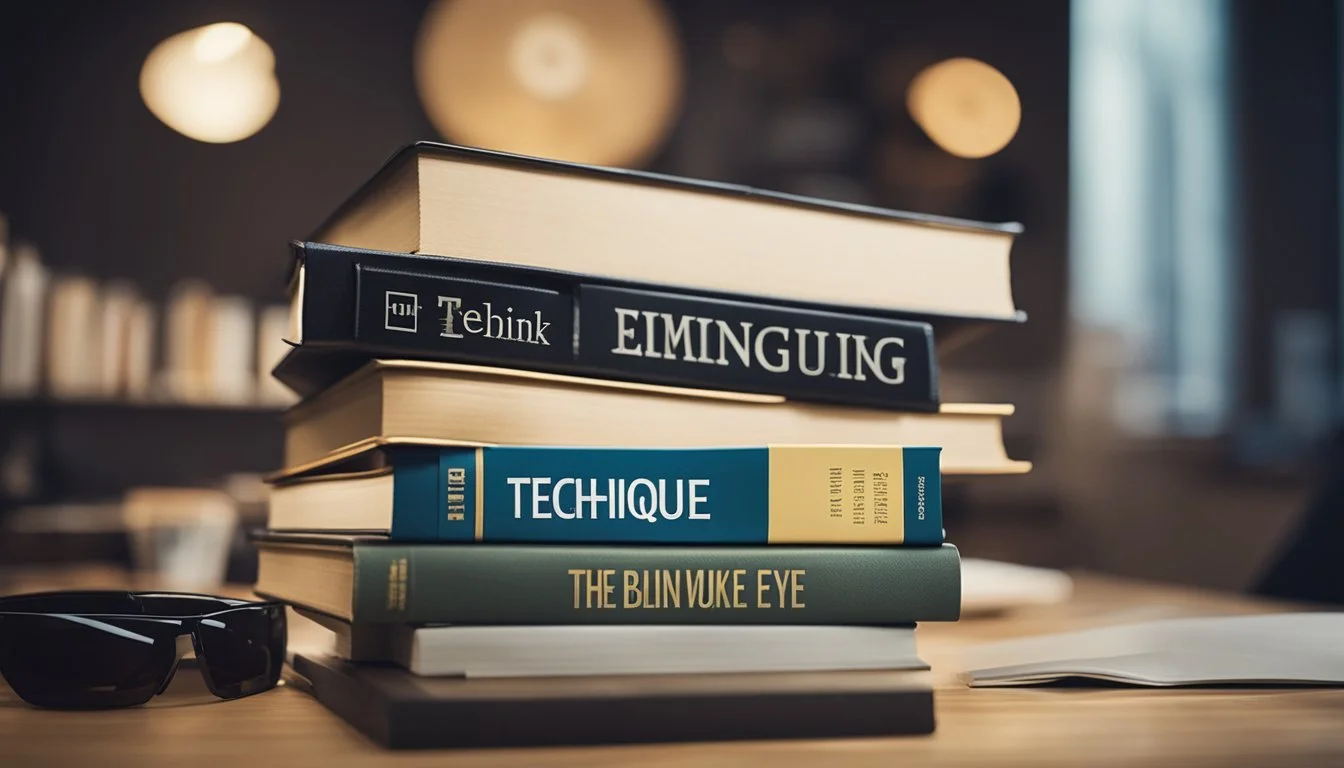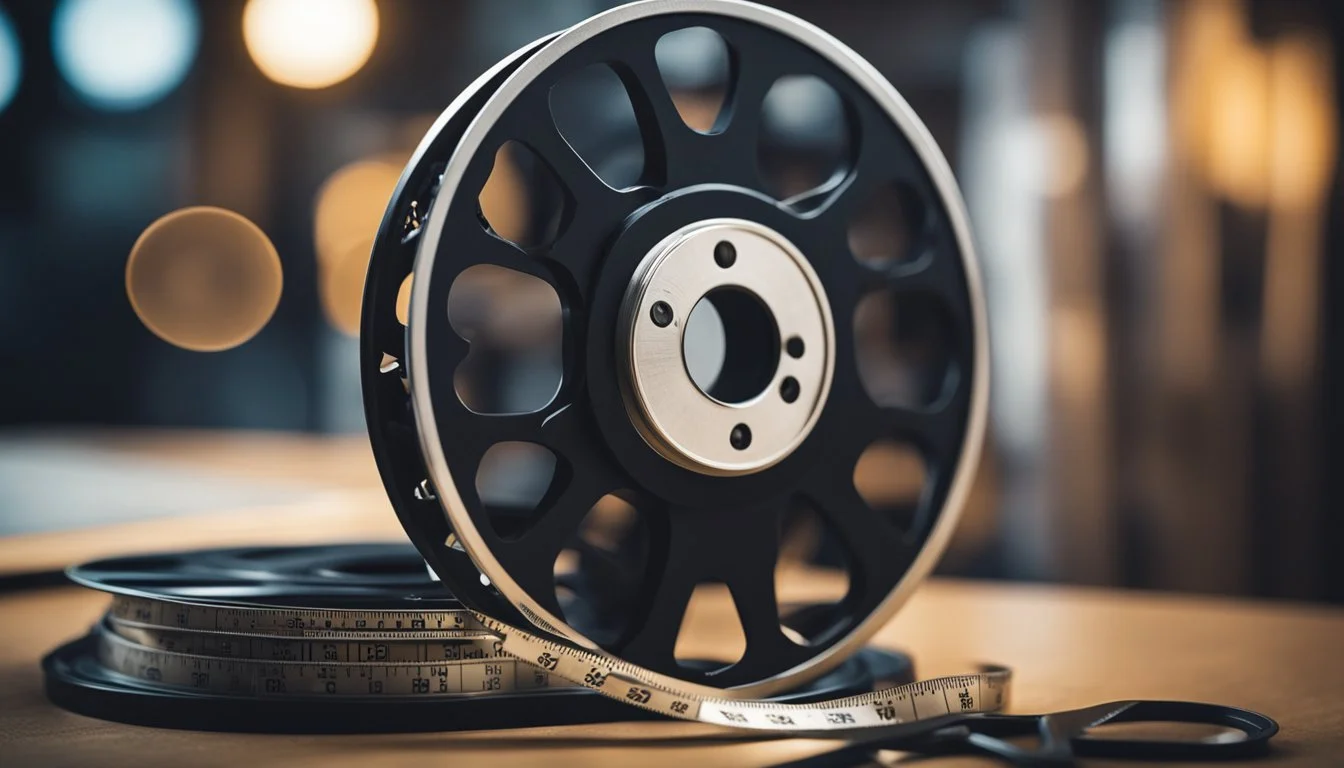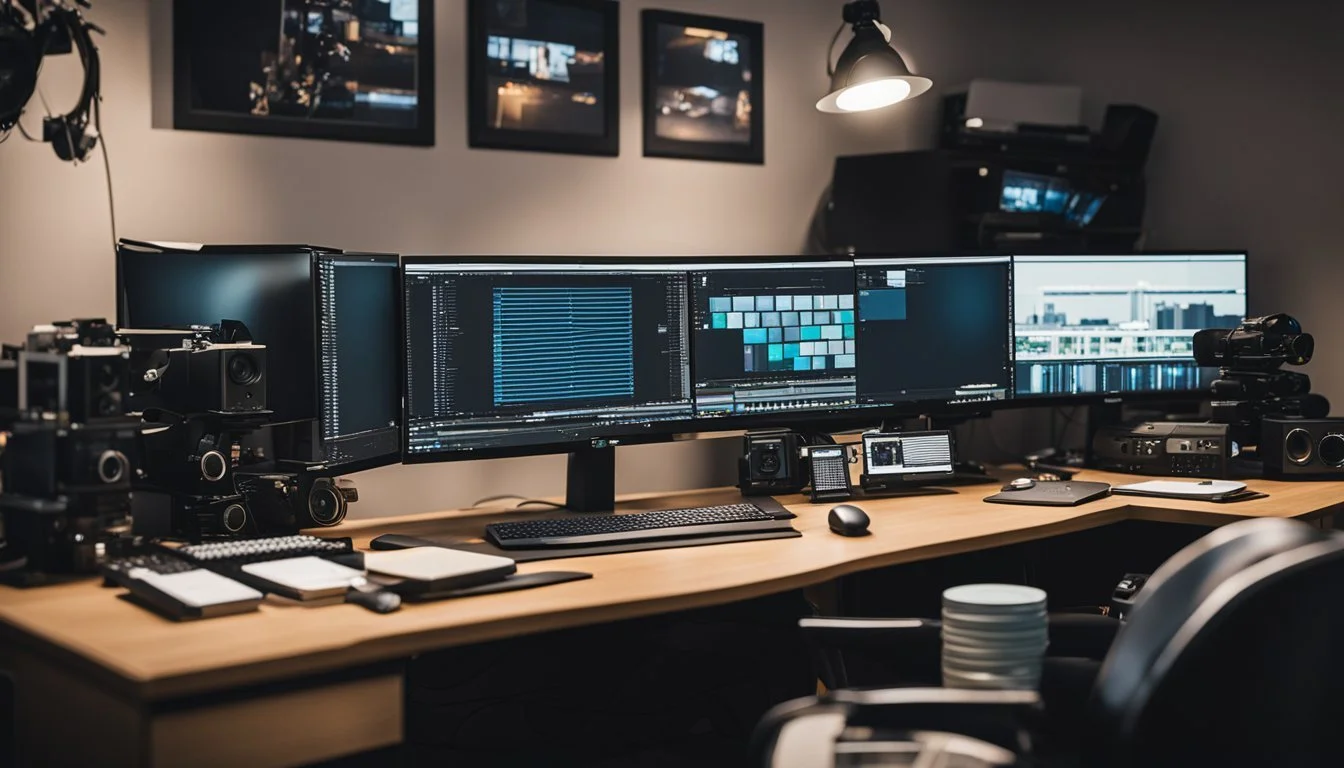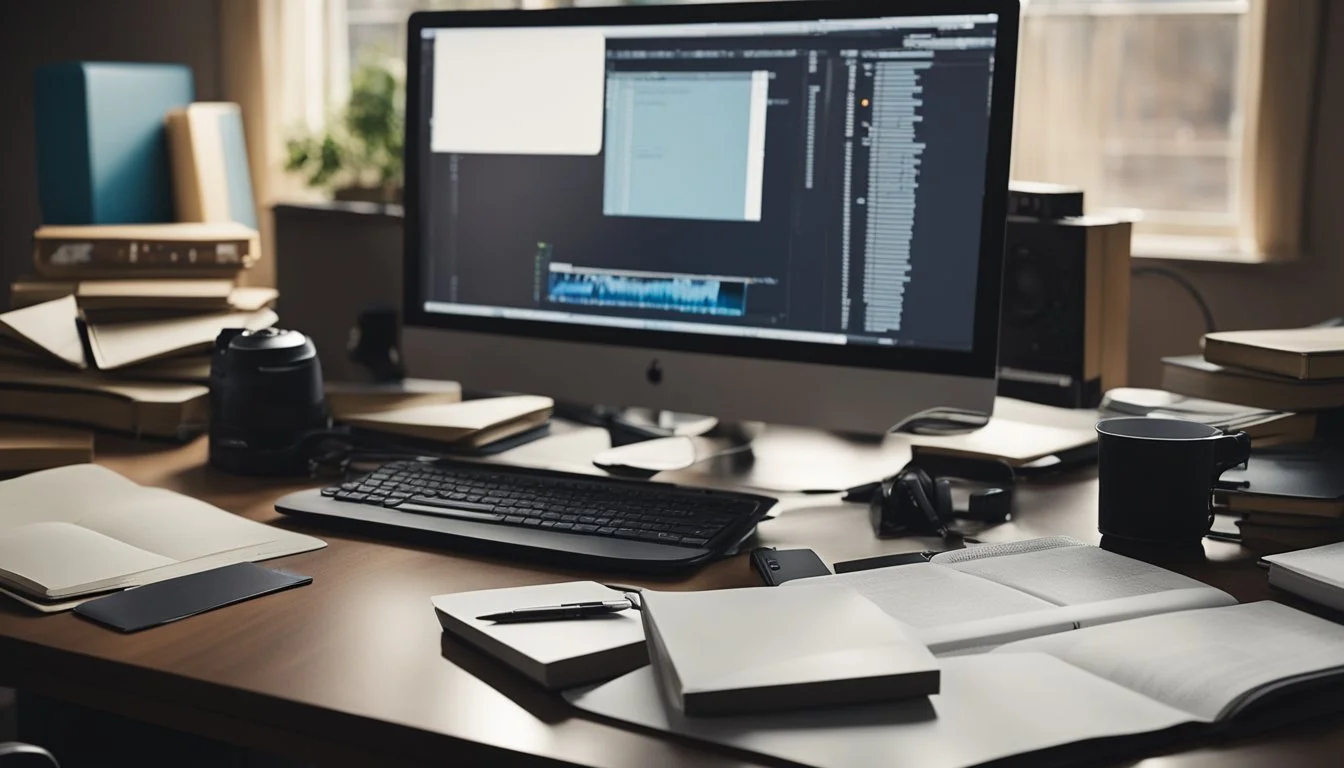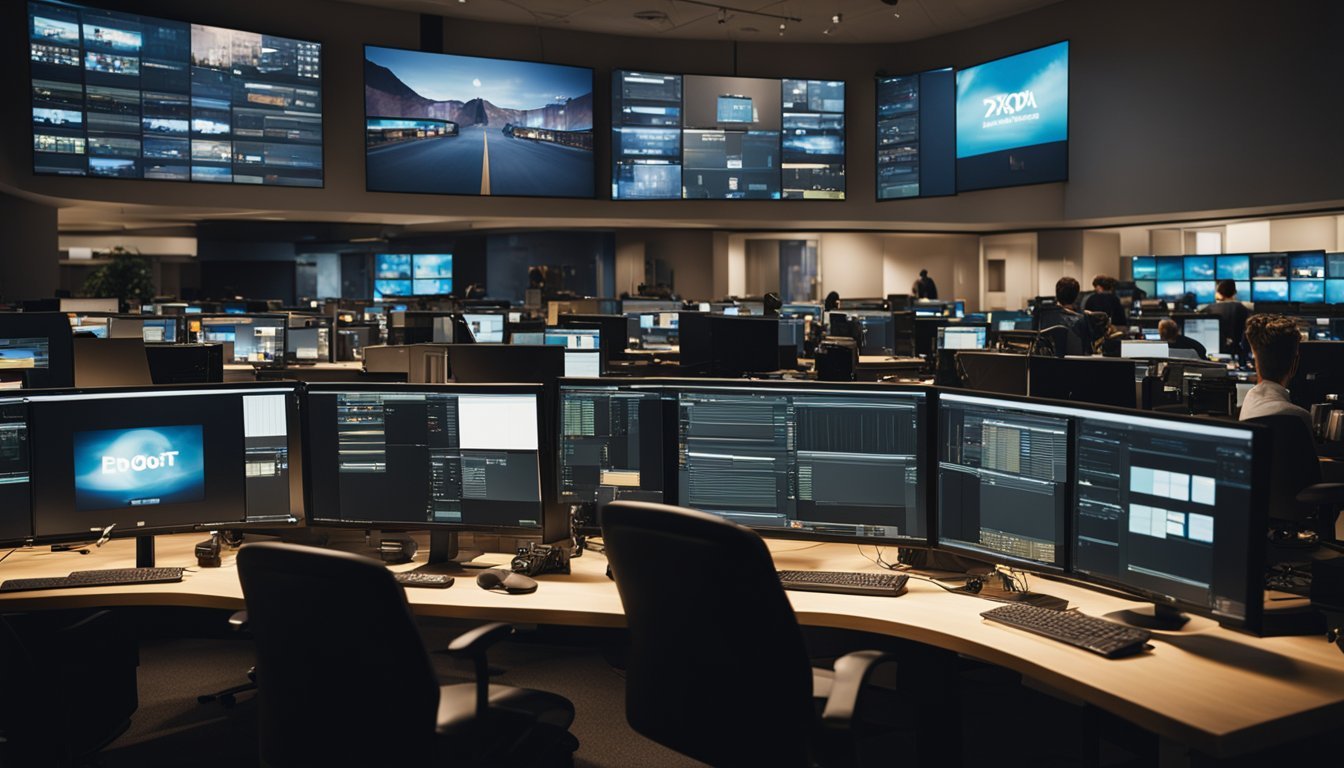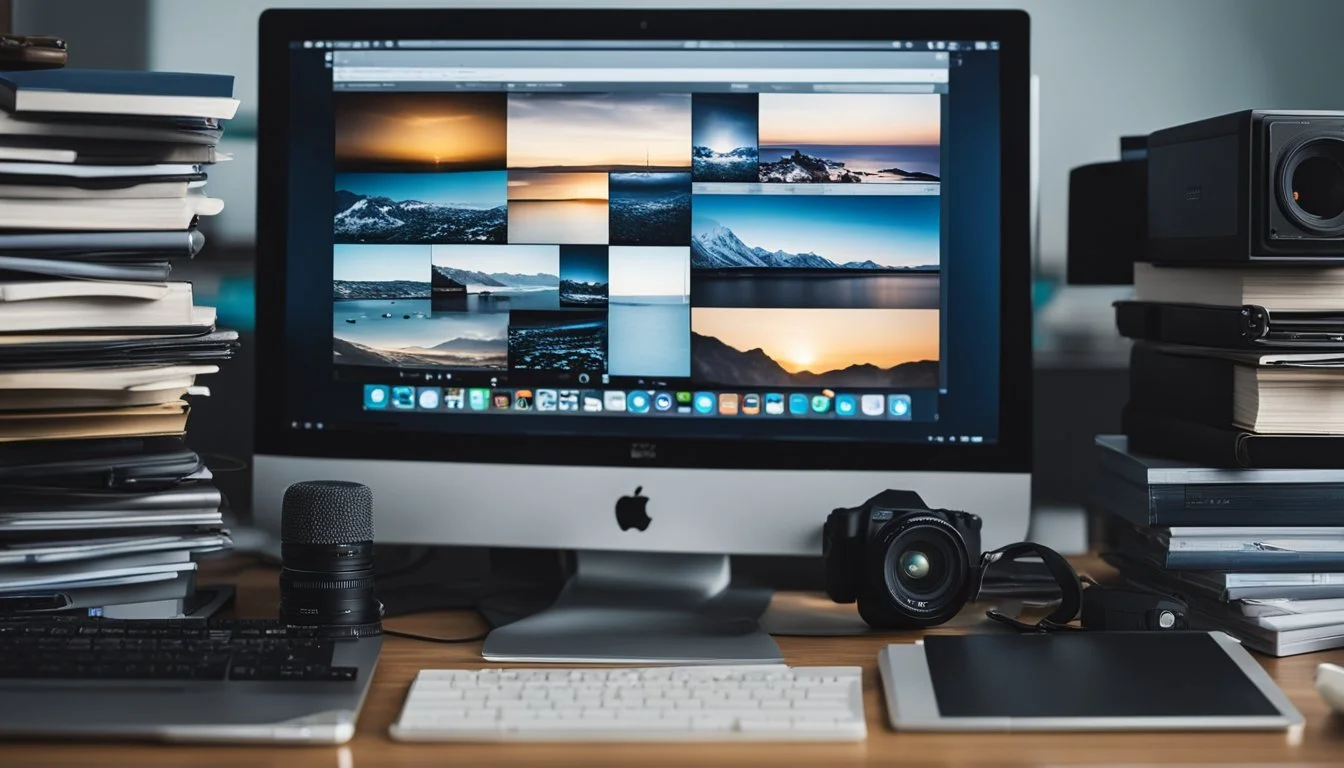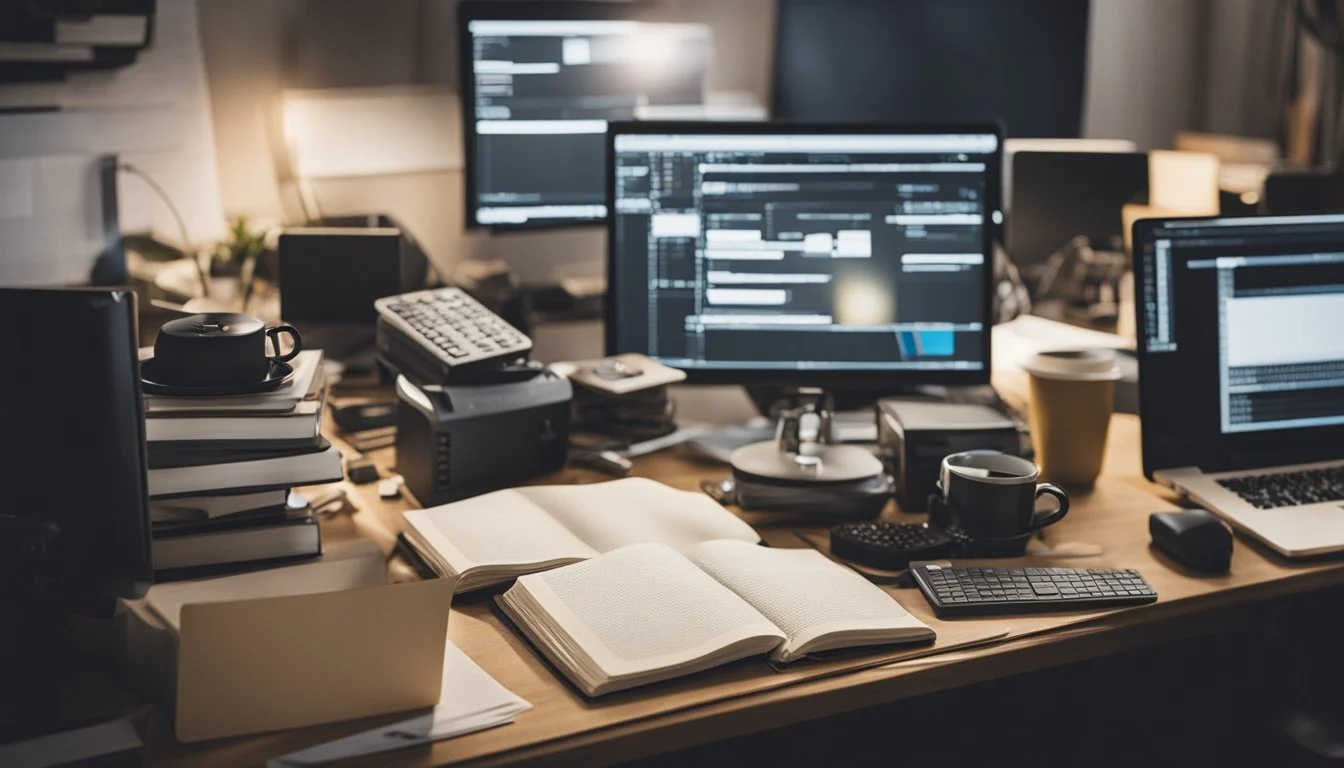13 Must-Read Books on Film Editing Techniques for Aspiring Filmmakers
Film editing is a crucial element of the filmmaking process that shapes the final narrative, influences the pacing, and enhances the emotional impact. For anyone aiming to understand or master this craft, exploring the right resources is essential. These books offer insights into the techniques and principles that drive effective film editing.
In this article, 13 must-read books have been selected to provide a comprehensive guide for both aspiring editors and seasoned professionals. Each book contains valuable information and perspectives that can help elevate one's editing skills to new heights.
1) In the Blink of an Eye by Walter Murch
Walter Murch, a renowned film editor and sound designer, authored "In the Blink of an Eye." This book is a distinguished essay on the art and craft of film editing.
Murch explores the theoretical and practical aspects of cutting film. He emphasizes the significance of instinct and intuition in making editing decisions.
The book discusses the importance of rhythm in editing. Murch likens editing to natural human actions, such as blinking, to illustrate how cuts should align with visual and emotional beats.
Furthermore, Murch delves into the necessity of continuity. He argues that while maintaining continuity is important, it should not overpower the storytelling.
"In the Blink of an Eye" is considered essential reading for film students and professionals alike. Murch's insights provide valuable lessons for anyone interested in the mechanics of editing.
The book also highlights the evolving nature of film editing. Murch reflects on technological advancements and their impact on the editing process. This perspective is crucial for understanding the dynamic world of film production.
Readers will appreciate Murch's clear and direct writing style. His experience and authority in the field resonate through each page of the book, making it a valuable resource.
"In the Blink of an Eye" remains an influential text in the realm of film editing. Walter Murch's analysis and reflections offer deep insights into the craft.
2) The Conversations: Walter Murch and the Art of Editing Film by Michael Ondaatje
Michael Ondaatje and Walter Murch's collaboration presents a masterful blend of literary and cinematic storytelling. The book is a detailed dialogue between Ondaatje, a Booker Prize-winning author, and Murch, a legendary film editor.
Their discussions span the entire filmmaking process. Murch illustrates how editing shapes the narrative and emotional impact of a film.
Readers gain insight into Murch's meticulous editing technique. He explains the importance of rhythm, the role of intuition, and the challenges of working with complex material.
The book also highlights Murch's contributions to iconic films like The Godfather and Apocalypse Now. His innovative approach to sound and picture editing transformed these movies into cinematic masterpieces.
Ondaatje's perspective adds depth, showcasing his fascination with the editing craft. Their collaborative dynamic offers a unique look at the intersection of writing and film editing.
This book is essential for anyone interested in the art of filmmaking and editing. It serves as both a technical guide and a source of creative inspiration.
3) When the Shooting Stops... The Cutting Begins by Ralph Rosenblum
Written by Ralph Rosenblum, "When the Shooting Stops... The Cutting Begins" offers a detailed look at film editing from an industry veteran. Rosenblum's credentials include editing six Woody Allen films, among others.
The book provides both a history of film editing and Rosenblum's personal experiences. It covers his early work with documentaries and TV spots in the 1950s and his transition to feature films.
This title serves as an informative resource for those interested in the behind-the-scenes aspects of movie-making. It emphasizes the editor's creative role, highlighting the challenges and artistry involved in the profession.
Insights from Rosenblum, combined with his storytelling ability, make this book a compelling read for aspiring editors.
4) Art of the Cut by Steve Hullfish
"Art of the Cut" by Steve Hullfish is a key resource for anyone interested in film and television editing. This book offers an in-depth view into the techniques and creativity involved in the editing process.
The book features interviews with over 50 top editors from around the world. These editors share their experiences, insights, and methods, providing valuable perspectives on the craft.
The discussions include winners of numerous Oscars for Best Editing, nominees, as well as Emmy winners and nominees. Their combined expertise gives readers a comprehensive look at contemporary editing practices.
Steve Hullfish's method of using a "virtual roundtable" creates an engaging way to understand various approaches. This setup allows readers to grasp the nuances of the editing world.
The book is a treasure trove of professional knowledge, capturing the essence of what it takes to excel in film and TV editing.
5) The Technique of Film and Video Editing by Ken Dancyger
Ken Dancyger's "The Technique of Film and Video Editing" is a pivotal text in the field. It presents an in-depth exploration of the artistic and aesthetic principles of editing. The book covers both picture and sound, offering a comprehensive look at the craft.
Dancyger places emphasis on storytelling choices that editors face. By integrating theory, history, and practice, he provides a holistic view of the editing landscape. His expertise as a professor at NYU's Tisch School of the Arts further reinforces the book's authority.
The book includes analyses of photographs from classic and contemporary films. These examples serve as visual aids, helping readers grasp complex concepts. Dancyger's detailed approach makes it a valuable resource for both professional filmmakers and students alike.
By focusing on the fundamentals of editing as an art form, "The Technique of Film and Video Editing" goes beyond just software tutorials. It encourages readers to appreciate the broader implications of their editing choices. This approach makes it a must-read for anyone serious about mastering film editing techniques.
6) Making the Cut at Pixar by Bill Kinder
"Making the Cut at Pixar" by Bill Kinder offers an in-depth look at the art of film editing within animation. Kinder, who spent eighteen years at Pixar, provides readers with a unique inside perspective on how editing shapes the final product.
The book delves into the complexities of animation history and the evolution of digital cinema technology. It also highlights the collaborative studio culture that Pixar is known for.
Bill Kinder, along with co-author Bobbie O'Steen, explores every stage of production, from storyboards to final animation. This resource captures the critical role of editors in producing successful animated films.
With exclusive interviews and access to Pixar's vault, the book includes deleted scenes and demonstrations that illustrate key concepts. It's a valuable read for students of digital filmmaking, filmmakers in various production roles, and fans of Pixar.
7) Cutting It in Hollywood by Mitchell Danton
Mitchell Danton's "Cutting It in Hollywood" is a crucial read for anyone serious about film editing. Written by a Primetime Emmy® Award-winning editor, this book provides insight into the world of post-production.
The author shares firsthand experiences from editing blockbuster movies and hit TV shows. He details real-world situations and challenges faced by professional editors.
Danton emphasizes the skills and techniques that are essential for aspiring editors. Readers will gain insights from the lessons learned by top professionals in the industry.
This book is particularly useful for film students, assistants, and anyone looking to advance in their editing career. The perspectives offered by seasoned experts make it a valuable resource.
"Cutting It in Hollywood" makes complex editing concepts accessible and engaging. It stands out for its practical advice and behind-the-scenes look at the film editing process.
8) Editing Essentials by Lucy Brown
"Editing Essentials" by Lucy Brown stands as a staple for anyone looking to grasp the fundamental principles of film editing.
Written in clear and accessible language, this book ensures readers can understand and apply its lessons without feeling overwhelmed.
Brown covers both theoretical and practical aspects, making it suitable for beginners and seasoned editors.
The book includes detailed explanations of key concepts like pacing, continuity, and transitions.
It also provides practical exercises that help readers apply what they've learned in real-world scenarios. This hands-on approach makes complex ideas easier to grasp.
Lucy Brown also delves into the history and evolution of film editing, offering context that enriches the reader's skills and knowledge.
Real-world examples and case studies are used to illustrate successful editing techniques.
These examples help to bridge the gap between theory and practice, making the content incredibly valuable for aspiring editors looking to enhance their craft.
9) The Lean Forward Moment by Norman Hollyn
Norman Hollyn's "The Lean Forward Moment" is a noteworthy book for anyone interested in film editing. It introduces the 'Lean Forward Moment Method,' which is crucial for creating compelling stories.
The methodology is applicable across various roles in filmmaking, including editors, producers, and directors.
Hollyn emphasizes the importance of moments that make the audience lean forward in their seats. These moments are pivotal for engaging viewers emotionally.
The book covers essential techniques for storytelling through editing. Hollyn provides practical examples and insights from the industry.
Released in December 2008, "The Lean Forward Moment" is still relevant for modern filmmaking and media production.
Whether for film, TV, or web content, this book offers valuable strategies to improve narrative impact.
10) The Visual Story by Bruce Block
"The Visual Story" by Bruce Block is a pivotal resource in understanding visual structure in film. The book caters to students, filmmakers, and professionals in visual media.
Block's work emphasizes the interplay between story and visual elements. With over 700 color illustrations, it provides concrete examples of how visual structure can elevate storytelling.
The book covers essential film techniques. Topics include camera angles, lenses, actor staging, and composition. It also explores set design, lighting, and storyboard planning.
Visual storytellers are guided in making story-driven decisions. This includes camera coverage and editing insights. Block's approach is practical and easy to apply in real-world scenarios.
The text is highly regarded in the industry. Professionals from Walt Disney Television Animation find it inspirational and invaluable. The book's practical advice serves as a framework for creating compelling visual narratives.
11) Film Editing: Great Cuts Every Filmmaker and Movie Lover Must Know by Gael Chandler
Gael Chandler's book, "Film Editing: Great Cuts Every Filmmaker and Movie Lover Must Know," serves as an essential guide to the craft of film editing. Written by a working Hollywood film editor, this book is directed at filmmakers, film students, and enthusiasts.
Chandler employs nearly 600 colorful frames from various popular, recent films to illustrate editing techniques. These visual examples are paired with concise descriptions, making the book accessible and practical for quick reference.
The book is designed to reveal the often-invisible art of editing. Each illustrated frame and example intends to highlight the importance of editing decisions and the impact they have on the final cut of a film.
With its clear and structured approach, the book provides a cheat sheet for editors. It's a practical resource for creating memorable movie moments through skilled editing.
Whether one is an aspiring filmmaker or a movie lover curious about the intricacies of cinema, Chandler's book is a valuable tool. It helps readers understand the pivotal choices editors make, offering both inspiration and practical knowledge.
This comprehensive guide offers readers insight into the complex world of film editing, emphasizing the importance of every cut and transition in storytelling.
12) First Cut 2: More Conversations with Film Editors by Gabriella Oldham
"First Cut 2: More Conversations with Film Editors" by Gabriella Oldham features twelve interviews with distinguished film editors. Each editor provides insight into the techniques and processes that shape their work. Oldham's questions dive into their creative decisions and the challenges they face in the editing room.
The book serves as a sequel to "First Cut: Conversations with Film Editors," and explores the evolution of editing from traditional celluloid to modern digital techniques. It captures the transformative impact of technology on the craft.
Readers will find discussions on various film genres and styles, giving them a broader understanding of the editorial decisions involved. This includes both narrative and documentary film editing.
The book also sheds light on the collaboration between editors and directors, emphasizing the importance of this relationship in achieving the desired final cut. It illustrates how editors contribute significantly to the storytelling process.
13) Behind the Seen: How Walter Murch Edited Cold Mountain Using Apple's Final Cut Pro by Charles Koppelman
Charles Koppelman's book provides an insightful look into the post-production process of the movie "Cold Mountain."
Walter Murch, a three-time Academy Award-winning editor, utilized Final Cut Pro, marking one of the first times this software was used for a major motion picture.
The book includes personal anecdotes from Murch, journal entries, emails, and input from the director and edit staff, giving a multifaceted view of the creative workflow.
Koppelman chronicles how Murch navigated the technical and artistic challenges, offering readers a detailed understanding of the innovative editing techniques employed.
This book is essential for anyone interested in film editing and the evolution of digital editing tools in cinema.
Understanding the Basics of Film Editing
Film editing is a critical component of filmmaking, essential for shaping the final narrative and ensuring the smooth flow of scenes. Effective film editing requires a deep understanding of the editor's role and familiarity with various tools and software.
The Role of a Film Editor
A film editor's job is to transform raw footage into a cohesive story. They select the best shots, determine the pacing, and ensure continuity. Editors need a strong sense of timing and storytelling to convey the desired emotions.
In addition, collaboration with directors and other creatives is crucial. Editors must align their work with the vision of the film while bringing their unique perspective. Organizational skills are vital for managing and accessing the vast amounts of footage.
Essential Tools and Software
Film editors rely on a range of tools and software to execute their tasks efficiently. Software like Adobe Premiere Pro, Final Cut Pro, and Avid Media Composer are industry standards. These tools allow for precise cutting, color correction, and sound editing.
Additionally, hardware such as high-performance computers, dual monitors, and specialized keyboards are essential. These tools enable editors to work faster and more accurately. Understanding the features and functions of these tools is fundamental for any editor aiming to produce professional-quality work.
Advanced Techniques in Film Editing
Advanced film editing techniques can dramatically elevate a film's storytelling. Two key areas are non-linear editing, which allows for greater flexibility in manipulating the narrative structure, and compositing and special effects, which enhance visual storytelling.
Non-Linear Editing
Non-linear editing (NLE) systems enable editors to access any frame in a digital clip regardless of the sequence. Key software like Adobe Premiere Pro and Final Cut Pro revolutionized this method. Benefits include the ability to easily cut, reorder, and experiment with different versions of a scene without affecting the original footage, boosting creativity and efficiency.
Non-linear editing also supports non-destructive editing, where the original media files remain unaltered. This method includes using bins and timelines to arrange clips and scrubbing through footage to find specific moments quickly. It allows for intricate control over transitions, effects, and multi-layered editing, which can be particularly useful in complex narrative structures.
Compositing and Special Effects
Compositing is the process of combining multiple visual elements from separate sources to create a single image. Tools like Adobe After Effects and Nuke are essential for this technique. These techniques enable editors to create seamless scenes that would be impossible or impractical to film in real life.
Special effects (SFX) include both practical effects (captured in-camera) and digital effects (added in post-production).
Important aspects include keying, rotoscoping, and motion tracking. Keying involves removing backgrounds (using green screens), rotoscoping traces over footage to create realistic movement, and motion tracking adds elements that move with the footage. These tools are vital for creating realistic visual effects, enhancing storytelling by making the impossible seem believable.
The Evolution of Film Editing
Film editing has transformed significantly over the years, influenced by the development of new techniques and the work of visionary editors. This evolution can be traced through changing styles and the contributions of key figures in the field.
History of Editing Styles
Film editing began with simple in-camera splicing in the early 1900s. Editors would physically cut and glue film pieces to create a continuous narrative. Early pioneers like Edwin S. Porter used these techniques to produce groundbreaking works like "The Great Train Robbery" (1903), establishing continuity editing as a foundational style.
The Soviet Montage theory emerged in the 1920s, promoted by editors like Sergei Eisenstein. This style emphasized the power of juxtaposing shots to generate meaning and evoke emotions, seen in films like "Battleship Potemkin" (1925). Montage influenced not just Soviet but global cinema, showcasing editing's potential to shape a film's rhythm and narrative impact.
Later, movements like the French New Wave in the 1950s and 1960s brought a more experimental approach. Editors used jump cuts and non-linear narratives to challenge traditional storytelling, evident in works by directors like Jean-Luc Godard. This period highlighted the editor's role in creating innovative visual styles.
Influential Editors and Their Impact
Several editors have left an indelible mark on film history. Dede Allen, known for her work on "Bonnie and Clyde" (1967), revolutionized editing with her dynamic use of quick cuts and overlapping dialogue, contributing to the film's kinetic energy.
The contributions of Walter Murch can't be overstated. His work on films like "The Godfather" trilogy and "Apocalypse Now" introduced a sophisticated level of sound editing and complex narrative structures. Murch's book "In the Blink of an Eye" is a must-read for aspiring editors, providing deep insights into the thought processes behind editing choices.
Modern editors like Thelma Schoonmaker, who frequently collaborates with Martin Scorsese, continue to innovate. Her work on films such as "Raging Bull" (1980) and "The Departed" (2006) is noted for its precision and emotional poignancy, underscoring the critical role of an editor in shaping the final film.

